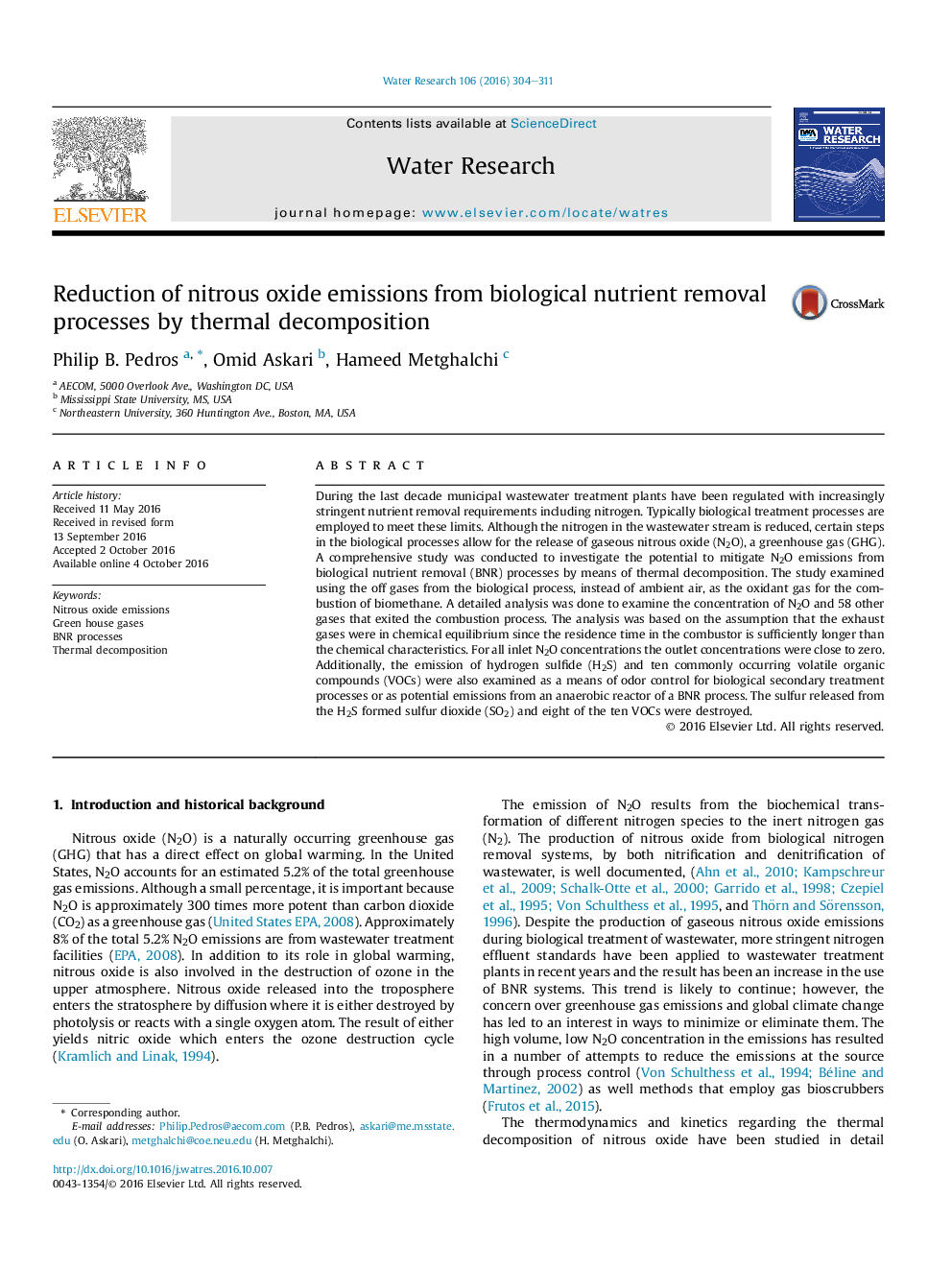| کد مقاله | کد نشریه | سال انتشار | مقاله انگلیسی | نسخه تمام متن |
|---|---|---|---|---|
| 6364220 | 1623062 | 2016 | 8 صفحه PDF | دانلود رایگان |
- Investigation of thermal decomposition of N2O emissions from BNR process.
- BNR off gases used as the oxidant gas stream to facility's combustion process.
- N2O emissions in the product stream approached zero for all cases.
- Method also reduced thermal NOx production in the combustion process.
- VOCs and hydrogen sulfide emissions from a secondary process also mitigated.
During the last decade municipal wastewater treatment plants have been regulated with increasingly stringent nutrient removal requirements including nitrogen. Typically biological treatment processes are employed to meet these limits. Although the nitrogen in the wastewater stream is reduced, certain steps in the biological processes allow for the release of gaseous nitrous oxide (N2O), a greenhouse gas (GHG). A comprehensive study was conducted to investigate the potential to mitigate N2O emissions from biological nutrient removal (BNR) processes by means of thermal decomposition. The study examined using the off gases from the biological process, instead of ambient air, as the oxidant gas for the combustion of biomethane. A detailed analysis was done to examine the concentration of N2O and 58 other gases that exited the combustion process. The analysis was based on the assumption that the exhaust gases were in chemical equilibrium since the residence time in the combustor is sufficiently longer than the chemical characteristics. For all inlet N2O concentrations the outlet concentrations were close to zero. Additionally, the emission of hydrogen sulfide (H2S) and ten commonly occurring volatile organic compounds (VOCs) were also examined as a means of odor control for biological secondary treatment processes or as potential emissions from an anaerobic reactor of a BNR process. The sulfur released from the H2S formed sulfur dioxide (SO2) and eight of the ten VOCs were destroyed.
225
Journal: Water Research - Volume 106, 1 December 2016, Pages 304-311
